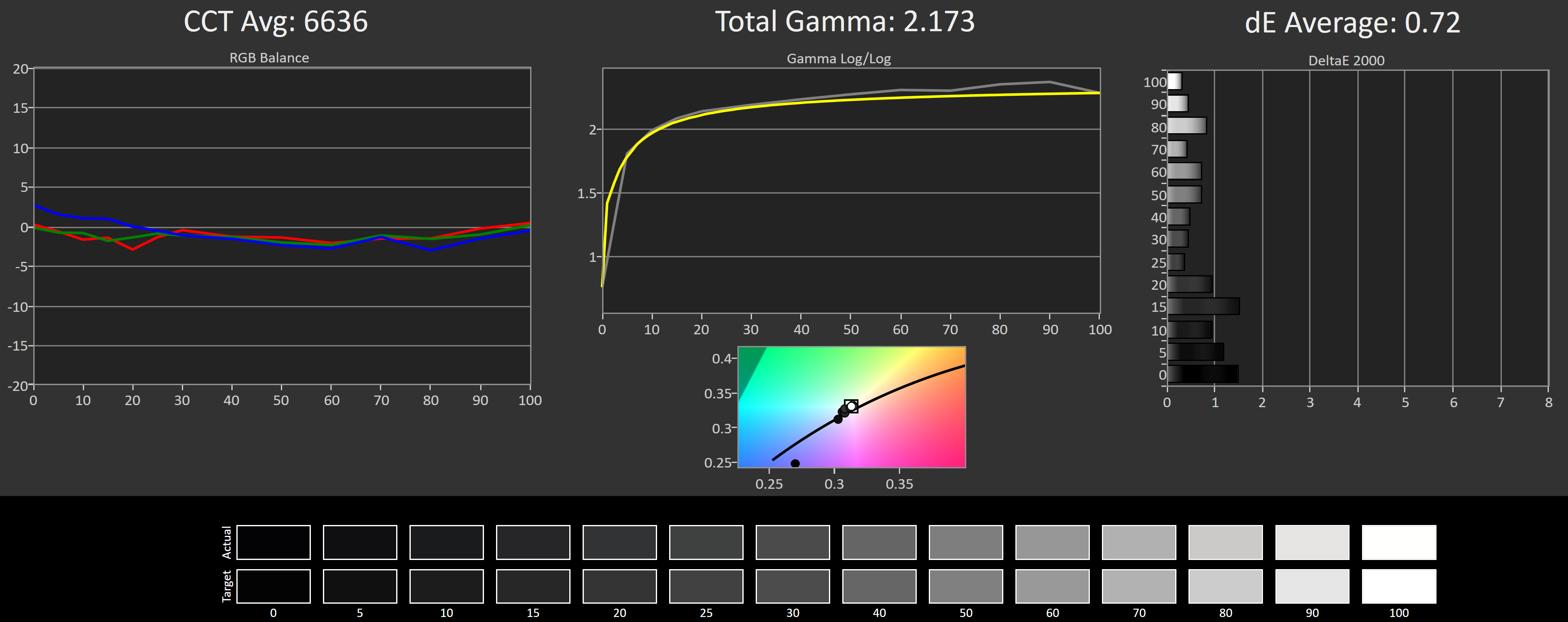


With random medium quality it's usually up to your taste (the result will be basically the same but manual tweaking is usually boring and time consuming, so.). With really good displays (price tag and/or brand means almost nothing) it's usually worth using the calibration controls. It all depends on how all these things are implemented internally and how sane and accurate or precise the internal "brain" and all the "guts" of your display and what you try to do with it (while adjusting it). but it all "slid away" as you moved the sliders around in the OSD). Sometimes it's caused by rounding errors (or outright defects, aka bugs) but usually it's the result of original factory TRC (and other) adjustments (whether those are "accurate" to our standards or not, we are talking about internal coherence here) getting out of alignment (so, say, with purely fictional numbers: a slight adjustment of 5 at point 10 now becomes an adjustment of 5 at point 8 but point was 8 was intended to get an adjustment of 20. What you might (rather often, sadly) perceive as a change in the tone response curve (after altering any contrast control, global or per channels, or really just "anything" in the menu) could be many things but definitely is not intended and not a feature with a purpose. As it's a mixture of poor native curves, and the Spyder 5 being awful at how it handles low end detail.)Ĭlick to expand.In reality however, the per-channel digital contrast controls (alias R,G,B Gains, etc) do not adjust the gamma at all (not the slightest, really). (The gamma is often the biggest adjustment. So usually the ICC doesn't change a whole ton color wise. Why do Tvs get so many more adjustments?) and then calibrate with an ICC if necessary. I calibrate my monitors as close as possible to target using the RGB controls (Or controls on a TV. Some displays may even have additional tweakable options not shown by the OSD by using SoftMCCS you may be able to expose and change them. I don't own any of those games so I can't test sorry.Īlso: By using the RGB controls on your display, you can in fact affect the gamma curve of your monitor depending on how it's adjusted. I haven't installed Displa圜AL on W10 yet (I just finally set up a new drive with W10 on it). The last time I checked ReSahde was limited to 8bit PNG files on it's own (and still, the game won't pass 10bit unless it's specifically designed to do it and none of them are, except HDR games in HDR mode and Alien:Isolation). The only drawback is the lack of 10+ bit output support in most games (at least in SDR display modes).
#Displaycal video mode software#
Just generate the software 3DLUT for ReShade (the PNG file) with the calibration LUT "applied" to it (and make sure the GPU LUT is cleared when games are launched - or generate different software LUT depending on the game type). Otherwise, you can emulate the GPU LUT with ReShade (so to speak, sometimes this could even be seen as a superior solution rather than a workaround). You won't get around this in practice with HDR anyways (external LUTs effectively stop working with dynamic metadata, like that of DolbyVision or HDR10+ but even the regular HDR10 static metadata varies between content, so needs separate static external LUTs based on actual content metadata).

The upcoming C9 will support VRR as well (and cut the ~21ms lag back to ~11ms), so you will have even less to hold against it as a "gaming" display (unless you really are a genuine crackhed superballleage propersonal musicplayer CS:GO master).
#Displaycal video mode Pc#
For example, the LG C8 OLED I use as a PC monitor. Yes, consumer grade displays featuring programmable hardware LUT (even 3DLUT) are now available at reasonable prices.


 0 kommentar(er)
0 kommentar(er)
